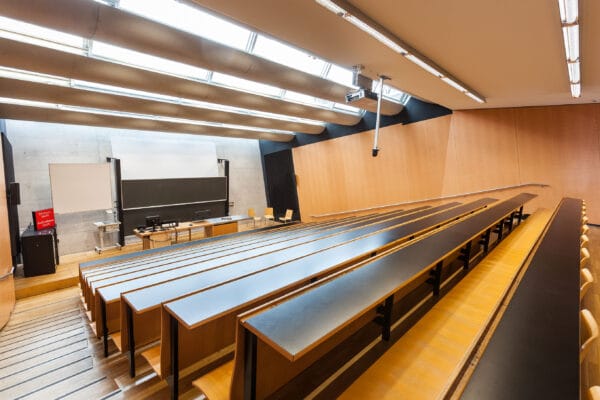
NAME:
SOWI - HS 1
BUILDING:
SOWI
FLOOR:
0
TYPE:
Lecture Hall
CAPACITY:
160
ACCESS:
Only Participants
EQUIPMENT:
Beamer, PC, WLAN (Eduroam), Overhead, Flipchart, Blackboard, Sound System, Handicapped Accessible, Microphones
Land-terminating polythermal glaciers in Svalbard and elsewhere in the Arctic are retreating rapidly, causing their forefields to expand rapidly, triggering equally rapid changes in conditions within their substrate (sediment, bedrock). This often results in permafrost aggradation in response to winter cooling in the recently exposed forefield. Permafrost aggradation may even begin in advance of glacier retreat, because the thinner ice can still lose sufficient heat during winter. As a consequence, the recharge, migration and discharge patterns of glacially-fed groundwater changes markedly. In Svalbard, many new groundwater springs are forming in recently deglaciated terrain, instead of following deeper migration routes beneath the permafrost. Furthermore, the springs collectively represent the largest known emission source of methane in Svalbard, enabling the escape of geological methane via shortened groundwater flowpaths pressurised by increasing meltwater fluxes. Therefore, we seek to better understand the relationship between glacier retreat, permafrost aggradation by collecting related data (thermistors, runoff measurements) at a selected field site (Scott-Turnebreen). With inputs from field measurements, modelling will be used to better understand the fate of the groundwater system as the glacier continues to retreat and the future development of permafrost in the forefield. In this talk we will present the first steps taken in the EU funded project CryoSCOPE, both, in field observations as well as modelling.

We and use cookies and other tracking technologies to improve your experience on our website. We may store and/or access information on a device and process personal data, such as your IP address and browsing data, for personalised advertising and content, advertising and content measurement, audience research and services development. Additionally, we may utilize precise geolocation data and identification through device scanning.
Please note that your consent will be valid across all our subdomains. You can change or withdraw your consent at any time by clicking the “Consent Preferences” button at the bottom of your screen. We respect your choices and are committed to providing you with a transparent and secure browsing experience.